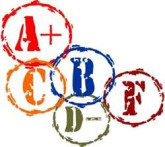Rubric Assessment: Try It; You May Like It!
The hot word on many college campuses lately has been “rubric assessment”, and you may be wondering the following:
- What is a Rubric?

- Why are rubrics important for giving academic feedback to students?
- Do rubrics take the place of my feedback to students?
- What steps do I take to begin using rubric assessment for my course?
These are all common questions that many faculty members have when thinking of using rubric assessment in their courses.
What is a Rubric?
According to Brookhart (2013), a rubric is a coherent set of criteria for student work that describes levels of performance quality. Rubrics assess students on what did correctly rather than punitively taking away points for what they did not do or may have done incorrectly. Sounds simple enough, right? Unfortunately, rubrics are commonly misunderstood and misused. The good news is that when rubrics are created and used correctly, they are strong tools that support and enhance classroom instruction and student learning.
My Rubric Story:
Let me give you a personal testimony of how I began using rubrics in my English courses about four years ago. After teaching writing intensive literature courses at my former college for many years with enrollment caps of about twenty, one year, our enrollment caps were removed. All of sudden, we had writing intensive literature courses with thirty plus students that required three to four research assignments each semester in addition to other informal writing assignments such as journals and reflections on the readings. Many of our faculty used drafting stages, so this meant we were grading papers all the time.
I attended a rubric assessment workshop at a conference, so I decided to try it in just one section the following semester. I created a rubric, calibrated it with several other faculty members, and introduced it to my students in an American Literature class. The students received the news well because many of them were familiar with rubric assessment from their high school classes. The others did not complain and were open to seeing how it worked. Grading and giving feedback for this course were wonderful. I did not spend a lot of time grading papers and writing long feedback on their assignments because the students knew the feedback (rubric criteria) BEFORE they ever did the assignments.

Why are Rubrics Important for Giving Academic Feedback to Students?
Rubrics give learners all the criteria for success on an assignment up front by the detail, score, and the outcomes listed for each score. Because I introduced to the students on what it takes to “make an A” on an assignment, they knew exactly what was required to get the grade. Using rubrics for assessment made my time spent grading less than before. Rubrics gave my students instant feedback based on outcomes they knew at the time the assignment was given. Most importantly, when used appropriately, rubrics can improve outcomes by helping teachers teach and helping students learn (Brookhart 2013).
Do Rubrics Take Place of My Feedback to Students?
Rubrics give structure to assessment. The rubric provides specific feedback that is quantitative and not qualitative for students. Rubrics are not opinion-based, so students are more open to receiving scores based on rubric outcomes. Most rubrics are designed for repeated use, over time, on several tasks (Brookhart 2013). Students are given a rubric at the beginning of a unit of instruction or an episode of work. There is no law saying that you cannot give other feedback, but with a strong, valid rubric, it is not really needed.
What Steps Do I Take to Begin Using Rubric Assessment in My Course?

First of all, do more research on rubric assessment using articles in academic journals, books, or reputable education website's. I would suggest beginning with one course. This way, you can really focus on designing your assignments around either one rubric or specific rubrics. Next, CITI offers rubric training workshops for departments, so contact us to schedule one for your department. Finally, as with all new instructional approach changes or revisions, think positive and know that students are flexible and adjust well to change. If you find it works best for them, you can migrate the rest of your courses to using rubrics.

Bibliography
Brookhart, S. M. (2013). How to create and use rubrics for formative assessment and grading. Retrieved from https://ebookcentral.proquest.com
